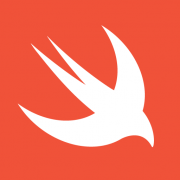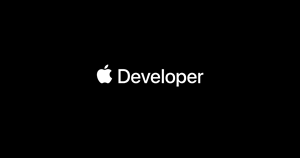Swift Takes Flight: A New Era for GNOME and Beyond
August 23, 2024, 10:38 pm
Swift, the programming language born from Apple’s innovation, is now spreading its wings beyond the confines of iOS and macOS. With the introduction of Adwaita-swift, developers can now craft applications for the GNOME desktop environment using Swift. This is a significant leap, akin to a bird breaking free from its cage. It opens new avenues for developers who have long admired Swift’s elegance but felt tethered to Apple’s ecosystem.
Adwaita-swift integrates Swift with GTK4 and Libadwaita, allowing for a seamless development experience. Imagine painting a canvas with vibrant colors; that’s what Swift brings to GNOME development. The language’s modern syntax and powerful features make it a joy to write, reminiscent of a painter’s brush gliding effortlessly across a canvas.
The introduction of Swift to GNOME is not just a technical advancement; it’s a cultural shift. Developers can now choose from a broader palette of languages, including Vala, Python, and JavaScript, with Swift joining the ranks. This diversity enriches the development landscape, much like a diverse ecosystem thrives with various species.
### The Power of Swift
Swift is designed to be approachable for newcomers while offering robust capabilities for seasoned developers. It’s fast, modern, and safe, making it an ideal choice for application development. The language’s syntax is clean and expressive, allowing developers to focus on what matters most: building great applications.
In the realm of GNOME, Swift’s declarative approach shines. Developers can describe what they want to achieve without getting bogged down in the minutiae of how to do it. This is akin to a chef following a recipe; the end result is delicious, but the process is straightforward and enjoyable.
### Practical Examples
The article introduces several practical examples to illustrate Swift’s capabilities within GNOME. One such example is a simple dice roller application. The code is concise, showcasing Swift’s ability to handle state management elegantly. The button displays the result of a dice roll, encapsulated in a clean user interface. This simplicity is a hallmark of Swift, making it accessible for developers of all skill levels.
Another example is a list management application. Here, developers can add and remove items from a list with just a few lines of code. The integration of Swift with GNOME’s UI components allows for a fluid user experience. It’s like a well-choreographed dance, where each step flows seamlessly into the next.
### The Future of Swift in GNOME
As Swift continues to evolve, its integration with GNOME is likely to deepen. The community is already buzzing with excitement about the possibilities. Developers are encouraged to experiment and contribute to the growing ecosystem. The introduction of a password generator application demonstrates Swift’s versatility. It combines user input with randomization to create secure passwords, showcasing both functionality and security.
The potential for localization is another exciting aspect. With built-in support for multiple languages, developers can reach a global audience. This is akin to a musician composing a symphony that resonates with listeners from different cultures.
### Challenges and Considerations
However, this new frontier is not without its challenges. Swift’s rapid development pace means that developers must stay vigilant. Changes in the language can lead to compatibility issues, much like a river that shifts its course over time. Developers need to be prepared to adapt and learn continuously.
Moreover, while Swift is making strides in GNOME, it still faces competition from established languages. Each language has its strengths and weaknesses, and developers must choose the right tool for the job. This is similar to a craftsman selecting the best tools for their trade.
### Swift on FreeBSD: A Broader Perspective
Meanwhile, Swift is also making waves on FreeBSD. The language’s adaptability is being tested as developers patch and compile it for this Unix-like operating system. This effort reflects a growing interest in using Swift beyond Apple’s ecosystem. The process is intricate, requiring modifications to system headers and careful attention to detail. It’s a testament to the language’s flexibility and the dedication of its community.
However, the experience on FreeBSD can be less than smooth. The tooling and support are not as robust as on macOS, leading to a bumpy ride for developers. This is a reminder that while Swift is powerful, it is still evolving, and its journey is just beginning.
### Conclusion
Swift’s integration into GNOME and its emergence on FreeBSD mark a new chapter in the language’s story. Developers now have more options than ever, allowing them to create applications that are not only functional but also beautiful. The landscape is changing, and Swift is at the forefront of this transformation.
As we look to the future, the possibilities are endless. Swift has the potential to become a staple in the GNOME development community, much like it has in the Apple ecosystem. With each new application, developers are painting a brighter picture for the future of software development. The journey is just beginning, and the world is watching.
Adwaita-swift integrates Swift with GTK4 and Libadwaita, allowing for a seamless development experience. Imagine painting a canvas with vibrant colors; that’s what Swift brings to GNOME development. The language’s modern syntax and powerful features make it a joy to write, reminiscent of a painter’s brush gliding effortlessly across a canvas.
The introduction of Swift to GNOME is not just a technical advancement; it’s a cultural shift. Developers can now choose from a broader palette of languages, including Vala, Python, and JavaScript, with Swift joining the ranks. This diversity enriches the development landscape, much like a diverse ecosystem thrives with various species.
### The Power of Swift
Swift is designed to be approachable for newcomers while offering robust capabilities for seasoned developers. It’s fast, modern, and safe, making it an ideal choice for application development. The language’s syntax is clean and expressive, allowing developers to focus on what matters most: building great applications.
In the realm of GNOME, Swift’s declarative approach shines. Developers can describe what they want to achieve without getting bogged down in the minutiae of how to do it. This is akin to a chef following a recipe; the end result is delicious, but the process is straightforward and enjoyable.
### Practical Examples
The article introduces several practical examples to illustrate Swift’s capabilities within GNOME. One such example is a simple dice roller application. The code is concise, showcasing Swift’s ability to handle state management elegantly. The button displays the result of a dice roll, encapsulated in a clean user interface. This simplicity is a hallmark of Swift, making it accessible for developers of all skill levels.
Another example is a list management application. Here, developers can add and remove items from a list with just a few lines of code. The integration of Swift with GNOME’s UI components allows for a fluid user experience. It’s like a well-choreographed dance, where each step flows seamlessly into the next.
### The Future of Swift in GNOME
As Swift continues to evolve, its integration with GNOME is likely to deepen. The community is already buzzing with excitement about the possibilities. Developers are encouraged to experiment and contribute to the growing ecosystem. The introduction of a password generator application demonstrates Swift’s versatility. It combines user input with randomization to create secure passwords, showcasing both functionality and security.
The potential for localization is another exciting aspect. With built-in support for multiple languages, developers can reach a global audience. This is akin to a musician composing a symphony that resonates with listeners from different cultures.
### Challenges and Considerations
However, this new frontier is not without its challenges. Swift’s rapid development pace means that developers must stay vigilant. Changes in the language can lead to compatibility issues, much like a river that shifts its course over time. Developers need to be prepared to adapt and learn continuously.
Moreover, while Swift is making strides in GNOME, it still faces competition from established languages. Each language has its strengths and weaknesses, and developers must choose the right tool for the job. This is similar to a craftsman selecting the best tools for their trade.
### Swift on FreeBSD: A Broader Perspective
Meanwhile, Swift is also making waves on FreeBSD. The language’s adaptability is being tested as developers patch and compile it for this Unix-like operating system. This effort reflects a growing interest in using Swift beyond Apple’s ecosystem. The process is intricate, requiring modifications to system headers and careful attention to detail. It’s a testament to the language’s flexibility and the dedication of its community.
However, the experience on FreeBSD can be less than smooth. The tooling and support are not as robust as on macOS, leading to a bumpy ride for developers. This is a reminder that while Swift is powerful, it is still evolving, and its journey is just beginning.
### Conclusion
Swift’s integration into GNOME and its emergence on FreeBSD mark a new chapter in the language’s story. Developers now have more options than ever, allowing them to create applications that are not only functional but also beautiful. The landscape is changing, and Swift is at the forefront of this transformation.
As we look to the future, the possibilities are endless. Swift has the potential to become a staple in the GNOME development community, much like it has in the Apple ecosystem. With each new application, developers are painting a brighter picture for the future of software development. The journey is just beginning, and the world is watching.

